Night Vision technology has been around since the latter part of World War II. Both German and American forces employed primitive night vision devices that used a powerful infrared (IR) light source and an anode/photocathode rig that was IR sensitive. Early units were large tank-mounted systems, but as the war drew to a close, man-portable technologies started to appear. These old active IR systems came to be known as Generation 0 devices. During the Vietnam War, the first passive Night Vision Devices (NVD) came into use. Passive systems solved a huge problem posed by the active system – namely that it was possible to see an active IR source from a long way away if you had a night vision sensitive device. Think of it like a man walking through dark woods with a flashlight – if you are standing in the woods as well, you can see the approaching flashlight long before its holder can see you . . .
Generation 1 units were completely passive. They simply magnified the ambient light 1000x. The downside was that they required some degree of ambient light either from the moon or stars and were consequently often referred to as starlight scopes.
ATN Corporation, a large manufacturer of Night Vision Systems has some really great information on how night vision works.nFrom their website:
“All Starlight technology Night Vision Devices consist of several main parts: an objective lens, an eyepiece, a power supply and an image intensifier tube (Photocathode Tube).
Night vision devices gather existing ambient light (starlight, moonlight or infra-red light) through the front lens. This light, which is made up of photons goes into a photocathode tube that changes the photons to electrons.
The electrons are then amplified to a much greater number through an electrical and chemical process. The electrons are then hurled against a phosphorus screen that changes the amplified electrons back into visible light that you see through the eyepiece. The image will now be a clear green- hued amplified re-creation of the scene you were observing.”
Shortly after the Vietnam War concluded, Generation 2 night vision devices started to appear. They were similar in design to the Gen 1 units, but employed a newer photocathode as well as a new innovation, the micro-channel plate (MCP). A MCP in an array of millions of glass tubes. When the electrons from the photocathode pass through them, it serves as a multiplier creating thousands more electrons. This means that there are many more electrons to hit the phosphorous screen which results in a brighter and sharper image. Light magnification is on the order of 20,000x in Gen 2 systems. Generation 2 units are also more reliable and have a longer lifespan than Gen 1 systems.
The mid 1980’s yielded the next major innovation. The Multi-Alkali photocathode of earlier generations was replaced by a Gallium Arsenide photocathode. The MCP was coated with an ion barrier film that increased tube life. The combined effect increased the light amplification of Gen 3 systems to 30,000 – 50,000x.
The current state of the art is the Gen 4 (commercial)/ Gen III Auto gated tubes (military) system. In Gen 4 systems, the power supply to the photocathode is auto-gated meaning it can react to changes in ambient illumination more rapidly. Furthermore, the ion barrier on the MCP is thinner meaning that more electrons pass through it leading to even better images. The Gen 4 designation is somewhat “squishier” than the other ones. It is not as clearly defined a specification as earlier generations are. The term, Gen 4 is used primarily in the commercial sector. The military does not use it, instead referring to these systems either as Gen 3 Auto gated or GEN-III OMNI-VI.
In between the major generations, you will find that manufacturers have improved the basic technology of a given generation and assigned it a proprietary designation. For example, ATN offers Gen 1, Gen 2, Gen CGT, Gen HPT, Gen 3, Gen 3A, Gen 3P, Gen WPT, and Gen 4 systems. Armasight, another NVD maker offers Gen 1, Gen Core, Gen 2 (SD, ID, HD, QS), and Gen 3 (Bravo, Ghost, Alpha, Pinnacle),
One weakness shared by all NVDs is that they can only magnify available light. They can’t magnify something that is not there. Outside on most nights, the moon and/or stars will provide enough light so that a NVD user can see. On the other hand, if you are trying to search a pitch black basement, the NVD will not be of much help. To combat this problem, most NVDs are equipped with an infrared illuminator – essentially a flashlight that emits on the IR spectrum, which is invisible to the naked eye. The downside of the IR illuminator is that man in the woods with the flashlight thing I mentioned earlier. If you are running active IR illumination on your NVD, you are going to look like a lighthouse to anyone else running night vision.
As I alluded to, the various NVD makers offer products in a variety of form factors. The simplest and cheapest is the hand held monocular. It’s cheap, but not particularly adaptable to doing much other than spotting. Monoculars are available with varying levels of magnification.
The next step up are the binocular systems which are just like they sound – a standard binocular with night vision technology built it. As it is used by both eyes it can be used for longer periods before eye fatigue begins to set in. Binoculars usually have some level of magnification as well.
The dedicated weapons sights are the next group. These systems are designed to be mounted on your rifle and used as your scope. They offer varying levels of magnification and as they are weapons mounted, they often can be equipped with more powerful IR illuminators than hand carried systems. NVD manufacturers also offer non magnified weapons mounted NVD systems that are designed to be used in conjunction with your daylight scope to give you the best of both worlds. Ironically, these non-magnified units often cost more than dedicated NVD scopes.
Next are the multi-purpose systems. These are essentially monoculars but have mount points so that they can be used as weapons sights, mounted to a helmet, headband, or simply hand carried. They also have additional engineering so that they can handle recoil when mounted to a gun (which accounts for their higher price when compared to the regular monocular)
The final level are the goggles. These systems are designed to be mounted on a headband or helmet, but can be carried and used a compact hand held binocular as well. By comparison with the standard binocular form factor, goggle systems rarely have any magnification built in. Within this category you have two main branches; monocular and binocular goggles. Monocular goggles have two eyepieces, but a single NVD. The image is transmitted to both eyepieces. The advantage of this system is that it is cheaper than the binocular one, but with only a single source, the user loses depth of field capability.
The binocular version of the goggles actually has two separate NVDs in it – one for each eye. Depth of field is persevered and with two NVDs the failure of one unit does not render the goggles useless. On the flip side, battery consumption is higher with two systems running and cost is increased.
A third variation that was developed for Spec Ops helicopter pilots and is now being used by Tier 1 teams is the quad tube goggle. These systems are based on the goggle design but have four NVD units which enables peripheral vision. To the best of my knowledge, these are not available to the general public and the cost is a good deal north of $50K per unit.
Gen 1 systems are by far the most popular and widespread – due mainly to their low cost. Simple Gen 1 monocular systems start around $200 with full-blown goggles starting around $600. Unfortunately, they are also the most primitive. For the average user who wants decent technology, but can’t afford to break the bank, choosing something at the Gen 2 level seems to make the most sense. Remember that you achieve roughly a 20-fold improvement in light amplification between Gen 1 and Gen 2 for roughly a $1,000 increase in cost. Moving from Gen 2 to Gen 3 will give you a 1.5 – 2.5 improvement over Gen 2 for another $1,000. Basically, a good rule of thumb is that you will spend $1,000 for each generation.
I have a Gen 1 monocular from ATN (an old Night Storm model that ATN no longer has on its web site but is still available in the retail channel for about $200) and have had a fair amount of experience with my buddy’s PS15-2 Gen 2+ set of goggles. While the Night Storm is fun for the kids to play with, I am nothing short of amazed at the quality of image on the Gen 2+ PS15 unit. The PS-15 is a true binocular NVD which accounts for its higher cost. ATN has two additional levels within Gen 2 before you graduate to Gen 3, but quite honestly, I’m more than happy with what the 2+ manages to do. Sure, if you can afford to go up in levels, by all means do so, but the $3K my buddy spent on his Gen 2+ goggles is certainly more than enough for me. If that’s too rich for your blood, keep an eye over at the Dvor site which is run by Optics Planet. They routinely run specials on NVDs and you can usually find things in Gen 1, 2, and 3 on the site for hundreds off what you would normally pay. If you can afford it, make the jump to at least Gen 2. You’ll be glad that you did.
While NVDs are great for many things, their use creates some problems when using standard equipment. Red Dot Sights for one have some major issues with NVDs. The red dot that is visible to the naked eye is completely invisible when using NVDs. To address this issue, some red dot sights (generally the more expensive ones) have a NVD setting that employs an IR dot that is visible when wearing a night vision device. Aimpoint’s Micro-T1 does as does their more reasonably priced Patrol Rifle Optic (PRO).
Those who are fans of red or green laser aiming systems are going to run into the same problem. The solution is the same. In this case, several companies such as Laser Devices and Burris now offer laser sights that feature both visible and IR lasers that can be used with and without night vision.
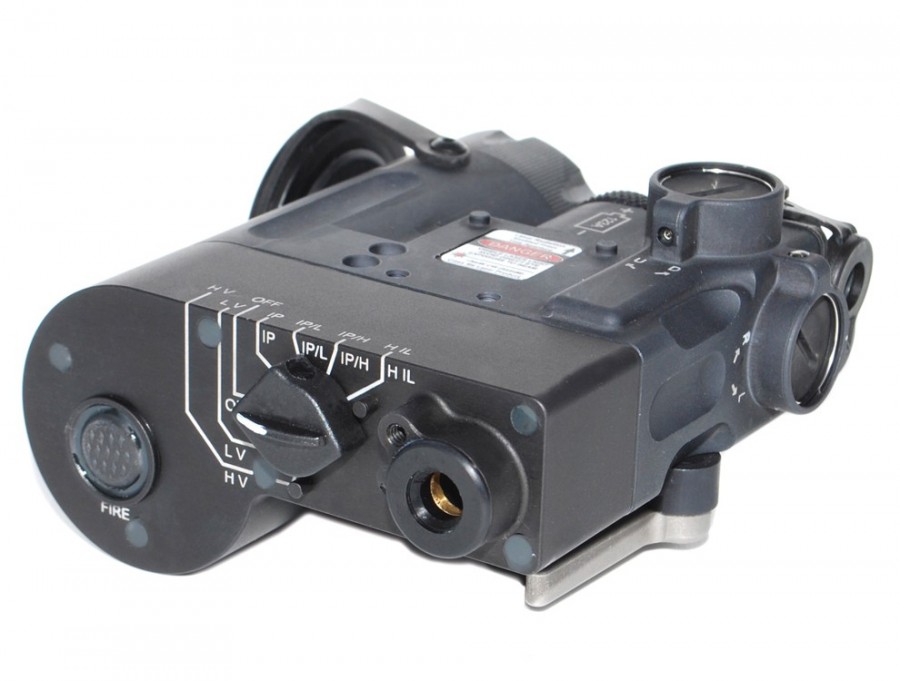 One note on these systems. There are two different versions of IR lasers floating around. Military and Law enforcement have access to systems using powerful IR lasers that have the capability of causing severe damage if shined into the eye. For this reason these systems are regulated by the FDA and not available to the general population. For the rest of us, manufacturers now offer “eye safe” IR lasers that are not as powerful, but won’t do massive eye damage and are thus not regulated by the FDA. While these systems are lower powered, they are more than capable of illuminating targets 100 – 200 yards out which should meet the needs of most users.
One note on these systems. There are two different versions of IR lasers floating around. Military and Law enforcement have access to systems using powerful IR lasers that have the capability of causing severe damage if shined into the eye. For this reason these systems are regulated by the FDA and not available to the general population. For the rest of us, manufacturers now offer “eye safe” IR lasers that are not as powerful, but won’t do massive eye damage and are thus not regulated by the FDA. While these systems are lower powered, they are more than capable of illuminating targets 100 – 200 yards out which should meet the needs of most users.
Urban commandos, hardcore preppers and other folks who feel the need for high level military equipment can certainly still get their hands on the military grade lasers. If you look hard enough, it is possible to find one of these on the gray market, but be warned, none of the manufacturers will honor the warranty for devices sold this way. Also, to really utilize the additional range that these more powerful lasers will deliver, you need NVDs that are capable of seeing long distances clearly. This means higher generation and costlier NVDs. But, at least the option is there.
As with anything, be a smart shopper. There are lots of cheap Chinese knock-offs out there. NVD equipment will die. It’s not a question of if, but when. If you pay a little more, but buy from a legitimate source, the company will stand behind their product. My Gen 1 Night Storm died six months into its two year warranty. ATN cheerfully replaced it. As for what to buy, consider your needs. Price shop. There are deals to be had, but bear in mind that relatively immutable $1,000 barrier between each generation. As with everything else, buy the best you can afford.
Note: Night Vision images and pictures of example NVD systems all courtesy of ATN Technologies Website. Picture of 4 tube NVD courtesy of L3.






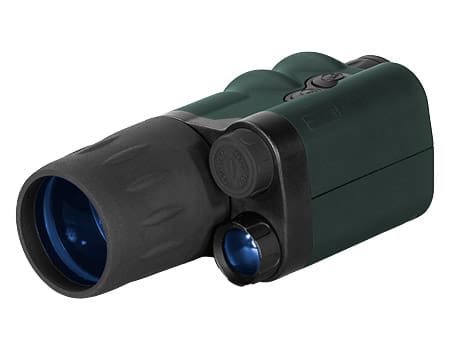
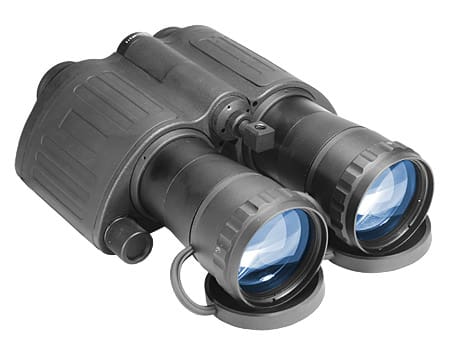
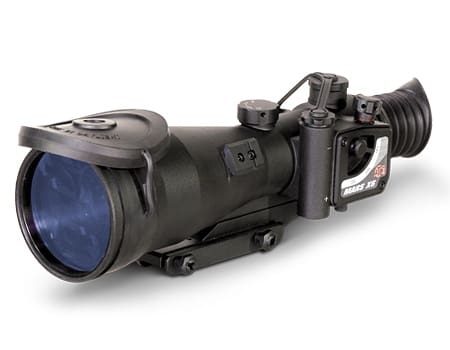


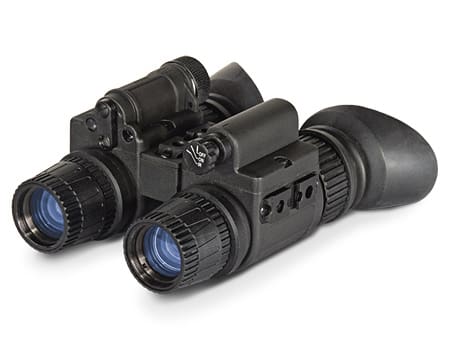
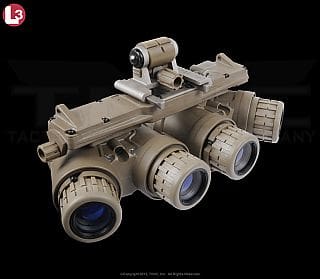
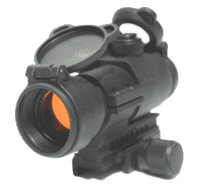


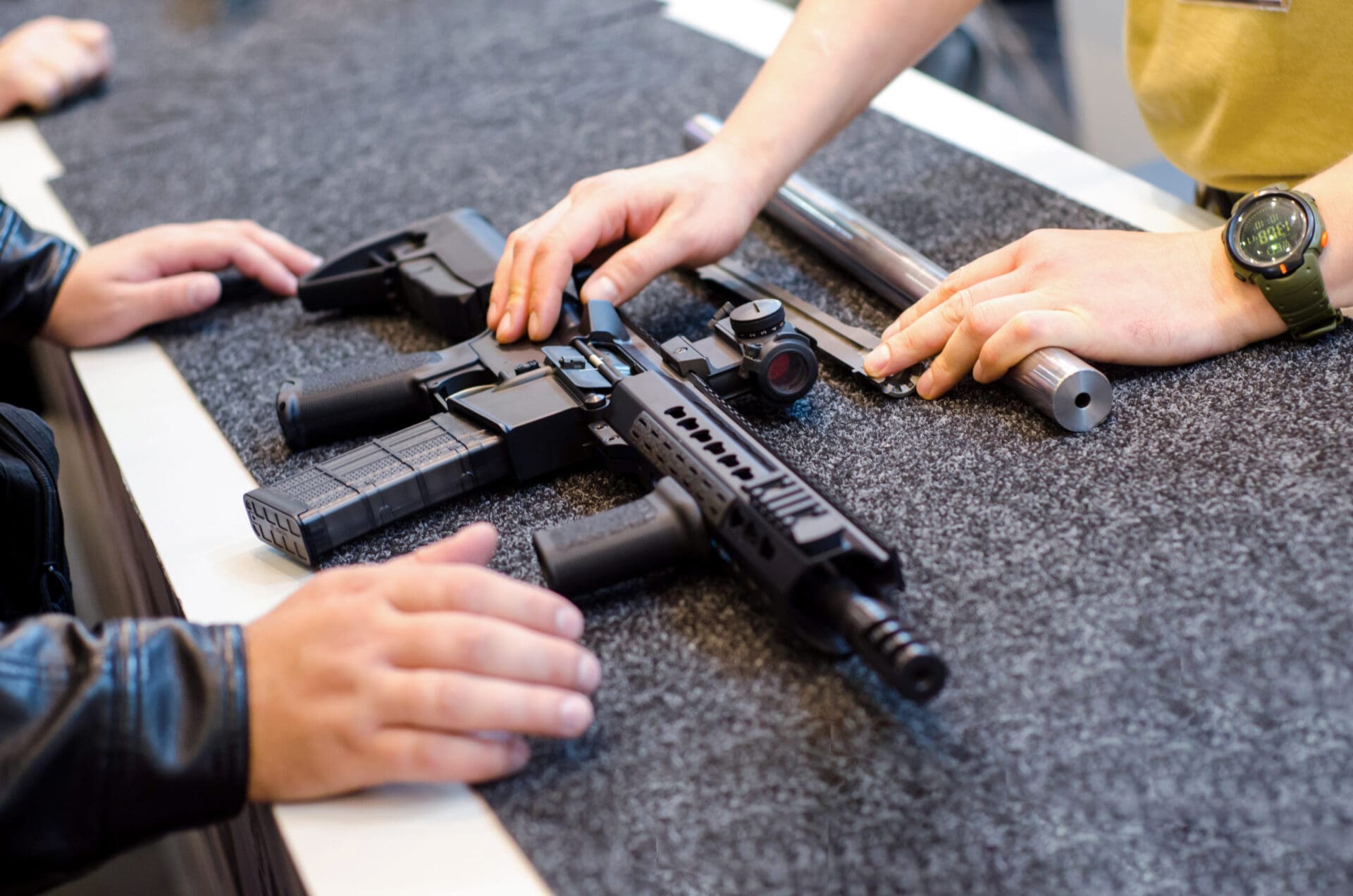
Digital night vision scopes are significantly better than Gen1 and cost about the same. And for some reason not many are made and there is little information on them. Not sure why because my cheap digital NV works great.
Jim, will use of the IR setting on a red dot, or worse a laser cause the same flashlight problem as employing active IR amplification in that you will now be very visible to anyone else using night vision equipment?
Kevin,
If you are using an EOTech or Aimpoint that has an IRsetting than no, it should not be visible to anyone of the business end fo your of weapon. However, if you are using an sort of IR illuminators or laser it will be visible to anyone else wearing NOD’s.
Thank you Dave. I figured the laser would light you up to anyone else, but wasn’t sure about the IR setting on the red dots as its such low power.
Kevin – what Dave said. Also, consider with an IR NV, the dot should be no more observable to someone on the business end of the gun than a red dot in daylight would be.
Low cost (relatively) uncooled thermal googles / scopes (predator vision) will also start to show up in the next 5-10 years. Compared with NVG, it gets arround the no-light issue (cloudy moonless nights, basements) by way of the fact that we are all 100W lightbulbs in the long-wave IR spectrum. See the thermal systems now available from BMW and M-B for examples of what you get now for $2k, and figure 5-10 years for that level of performance to trickle down as markets open up in the consumer market (also applications in home efficency inspection which Europe will probably mandate, etc.)
I hope you are right, but from my experience, NV prices have not come down much in the past few years. I remember purchasing a surplus Gen 1 Russian scope for about $995 probably fifteen years ago. Back then Gen 2 NV started around $2K. Today, while the greatly inferior Gen 1 stuff has come down in price, the Gen 2 tech has not moved much. The $2K Gen 2, $3K Gen 3 price points have been pretty stable for nearly a decade.
I’m not sure I expect the Thermal stuff to be much different – the price of the very entry level stuff will come down, but if you want to get to a level where things are really usable, the price barrier may remain.
Thermal is not superior to night vision, it’s complementary. Thermal is great for target acquisition. But who is that blob? That’s where night vision comes in, for target identification. For hog hunting or depredation, you could get away with just thermal. But if you’re gearing up to spot trespassers or even to potentially pull a trigger on another person in combat, then you’d better identify your target. Ideally, if you want to see at night you should have regular daylight glass, night vision, and thermal vision optics with you. Camouflage is just as effective or more against night vision than it is against the naked eye and regular daylight glass optics, but it has little effect on thermal, and if there is not sufficient cover thermal will reveal the silhouette of animals and humans within range. Spot someone coming into range with thermal, then once you know someone’s there you identify them with night vision. With night vision, you can also ascertain what they’re carrying, equipment, insignia, etc. You can also see if it’s someone you recognize.
LOL do they have a helmet mount for the first one?
My Pop’s said that his Starlight scope is what saved his life while serving in Vietnam.
His greatest words of wisdom in warfare were always, “You want to see them before they see you”.
bookmarked. thanks for the write up
Thank you for a well-written and informative article. I would love to read something similar regarding thermal systems.
Jim, are the night vision images in the article real and truly representative, or have they been enhanced or “recreated?”
I’d have to say, Ask ATN for the definitive answer, but my experience with Gen 1 and Gen 2 stuff would suggest that the first two images are pretty spot on. Maybe Nick can chime in on the Gen 3 stuff.
I’ll say that I much prefer monoculars to binos. While some people had issues with depth perception, I found that the combined image available in the NVD with the non NVD eye provided a wider and more complete image. I did not see them as two separate images, but more unified. That was with the PVS14 (gen 3 I think), which of course appears to cost somewhere around 2700 at the least. The added benefit is that if you do run into something bright enough to blind your NVD eye, the other still works. Certainly if I have the money, I’d get a gen 4,but something like the PVS14 gives a nice crisp image for the most part that you can work with. Also very durable; still functional after being banged around in fights, running, and slightly more volatile incidents…
I say that also having used the binocular types, which felt too restrictive. Light conditions change throughout the battlespace, and there are certain things that are easier to see with the naked eye and vice versa.
Your point is valid given the conditions you operated under. My use tends to be more slow paced walking in the woods at night. It’s far less of a dynamic environment. For that use, I prefer The binocs, but that is why they offer choices.
Yay! Do Thermal next!
As soon as someone sends me a thermal scope, I’d be happy to do a review…
I really just want predator vision, but no, the government wouldn’t foot the bill.
I don’t agree. Look at https://www.gunsamerica.com/blog/prepping-101-cheap-night-vision-riflescopes/
Comments are closed.